How Can You Achieve the Perfect Front Yard Landscaping?
By Axis Fuksman-Kumpa • December 5, 2022

If your landscaping was a book, your front yard would be the cover! It's your guests' first impression of your home and the view that welcomes you home at the end of a long day. Getting your front yard landscaping right is essential for creating a beautiful and inviting entrance that feels just like you.
If you're not a landscaping expert, that's okay—because we are. Here at Tilly, we've tackled hundreds of landscape renovations and are experts in turning front yards into spaces that are beautiful and functional. There are some common questions that come up time and time again from frustrated homeowners who are trying to figure out how to plan their front yard landscape renovation.
We've got all the answers, plus a few of our favorite front yard landscaping ideas to get your plan started!

How do I create a design plan for my front yard?
Prioritize your goals
First things first, you have to know exactly how you want to use your front yard. Good landscaping isn't one size fits all!
Are you hoping for inviting front porch to host lots of guests in your cozy neighborhood? Or are you craving a little bit of privacy for your tiny urban yard? Do you want pristine gardens, or do you want a front yard where the kids can run and play? Knowing how you want to use your space will shape your design.
Don't forget to consider your maintenance goals as well! If you want to spend your weekends relaxing instead of pulling up weeds, you'll should prioritize low-maintenance landscaping. Think realistically about how much time you want to spend caring for your front yard landscaping before your plans get too wild.
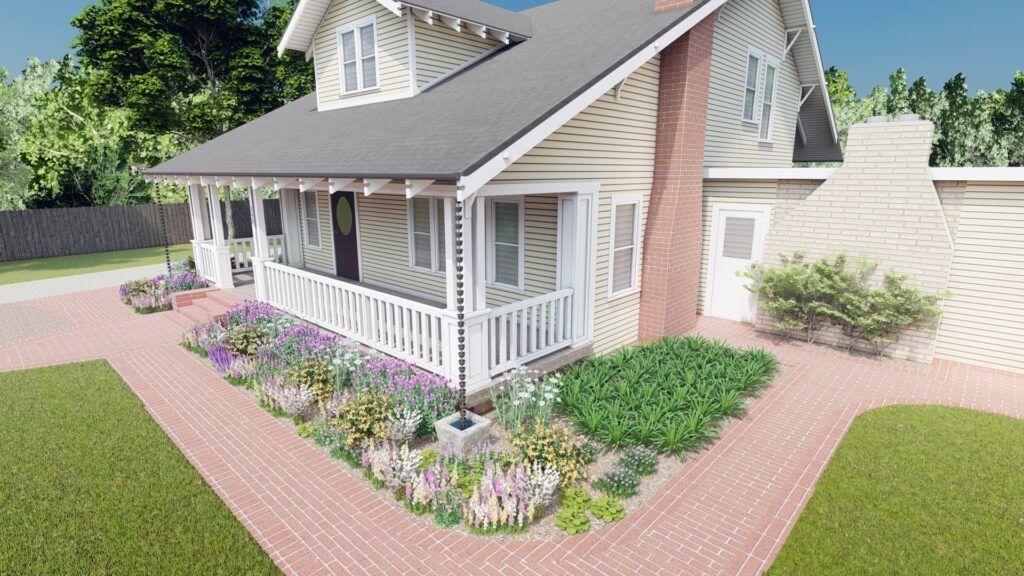
Think about the functionality of your front yard
Choosing the perfect flowers is important, but you have to think about form and function. Think about the practical considerations of your space and use them as a framework for your creative design choices.
For instance, what's the most logical route from your driveway to your front door? A winding stepping stone path might look magical, but you're going to want a direct path from point A to point B. Should you add a fence to your space for privacy or security? Make sure you pick the right fence for your needs, whether that's keeping your dog in or prying eyes out.
Also think about the scale of your space—you need to have enough room for the features you want. If you're designing for a compact yard, you should be looking for equally compact plants and landscaping features. On the other hand, you'll need to work to fill the space in a large front yard to prevent it looking bare.
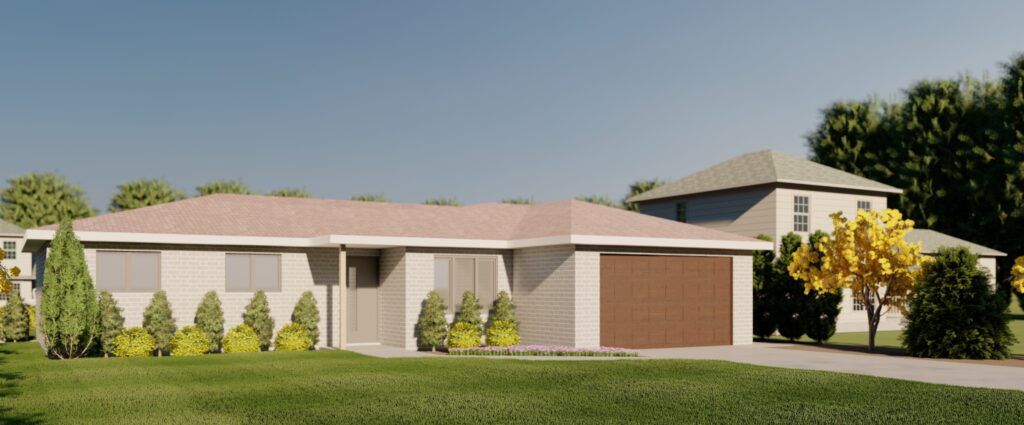
Consider your home's exterior
The exterior of your home should inform your front yard landscape design. A minimalist modern landscaping plan may look disjointed with a cozy cottage! The styles of your house and landscaping should be complementary to one another, and you can achieve that by taking design cues from your home's façade.
If your house has natural wood shingles, a wooden picket fence or wooden arbor will pair perfectly. If your house has blue trim, include some blue flowers in your garden design. Not everything has to match exactly, but taking inspiration from the materials, color palette, and style of your home will create cohesive landscaping.
Similarly, think about the scale of your house when choosing landscaping features to keep your design in proportion. A three story house will look refined framed by tall cypress trees, but a tiny house will look like it's a kid's playhouse. Think about the size and placement of plants and other features to show off your home in its best light.
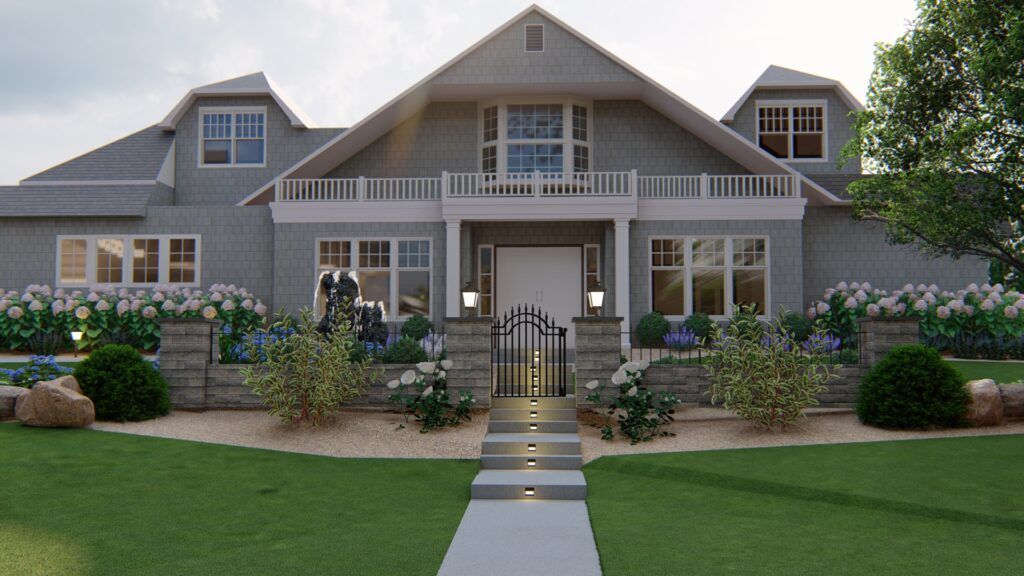
Understand the materials you're working with
When you have the big picture down, it's time to start thinking about the smaller details. What plants do you want to use? What material do you want to use for your deck? This is where doing research is essential!
The best landscaping should keep looking beautiful year after year, but for that to happen, you have to understand the materials you're working with and how they'll work in your space. For instance, you might love the look of ornate metal fencing, but if you live by the ocean, that gorgeous fence will likely corrode in the sea air after a couple of years. Before you plant a succulent garden, there's a whole host of questions you need to answer. Do you have the right desert soil? Do you get enough hours of sun each day? They might thrive in the summer, but can they survive your winters?
It can be intimidating to have to study every single item going into your outdoor space, but there are tricks you can use to make things easier. When it comes to flora, choosing native plants will help you find plants that are ideal for your region. For everything else, consult an expert! Ask at your local hardware store what materials perform best in your climate, or hire an experienced landscape designer to help you navigate all the tiny details.
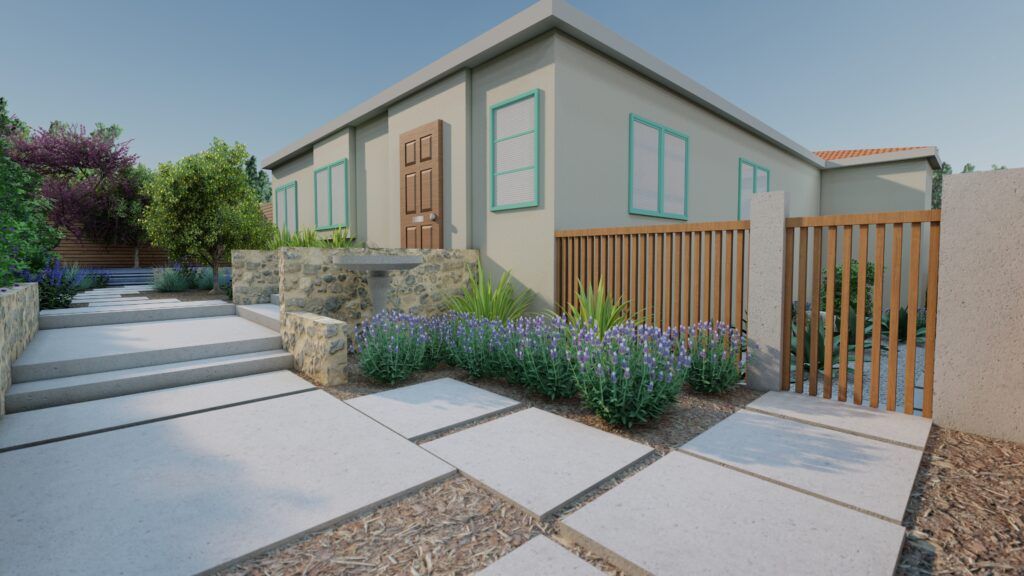
Your budget
We know budgeting is rarely fun, but it is important. If you don't plan ahead with your budget, you'll get through installing your beautiful new brick driveway only to realize you have $100 left for plants for the entire front yard!
Think about your renovation plans as a whole when considering your budget instead of thinking about one project at a time. Account for the costs of every part of your renovation from your ornamental rock garden to your flowers in your budget, and make sure to leave a little wiggle room for unexpected costs that pop up along the way.
Your landscape should ultimately be a space for relaxation—and financial stress has no place there.
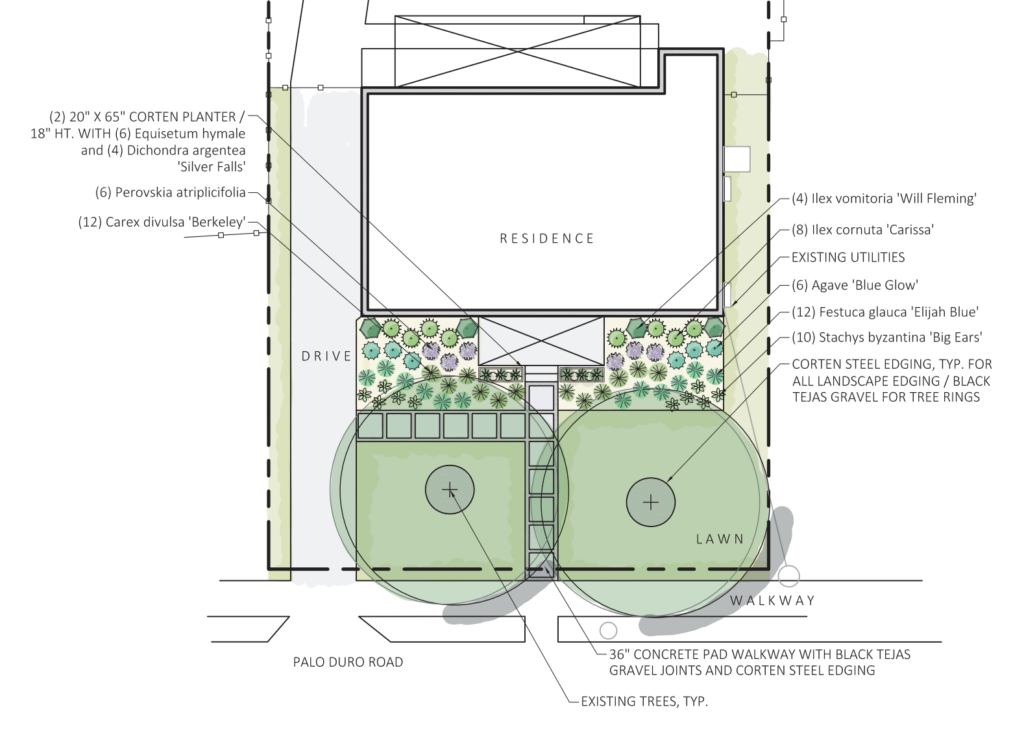
What is the cheapest way to landscape a front yard?
Yard updates can be expensive, and not everyone is working with the big budgets you see on HGTV. You can make beautiful upgrades to your front yard even if you're working on a shoestring budget!
There are many ways to make the renovation process more affordable:
- Consider installing your design in phases instead of one fell swoop. Instead of shelling out the full cost all at once, focus on your patio now and save the window boxes and flower beds for next month or even next summer. Working in small chunks lets you manage your time and your budget.
- Weigh your priorities and invest where it matters most to you. If you're determined to invest in a long-lasting composite front porch, consider changing your patio to DIY pea gravel instead of an expertly installed stonework. Choose where you'll compromise and where you won't.
- Get creative with sourcing and labor. Imported marble is expensive, but stone from your local quarry probably isn't—you might even be able to find some being given away for free. Wood that's already on your property can be turned into walls for garden beds. Recycled fill gravel can turn into gravel pathways and patios. And the more you DIY, the more money you save!
Pick and choose the techniques that work for you to bring your landscaping dreams down to a budget that's realistic and comfortable for you.
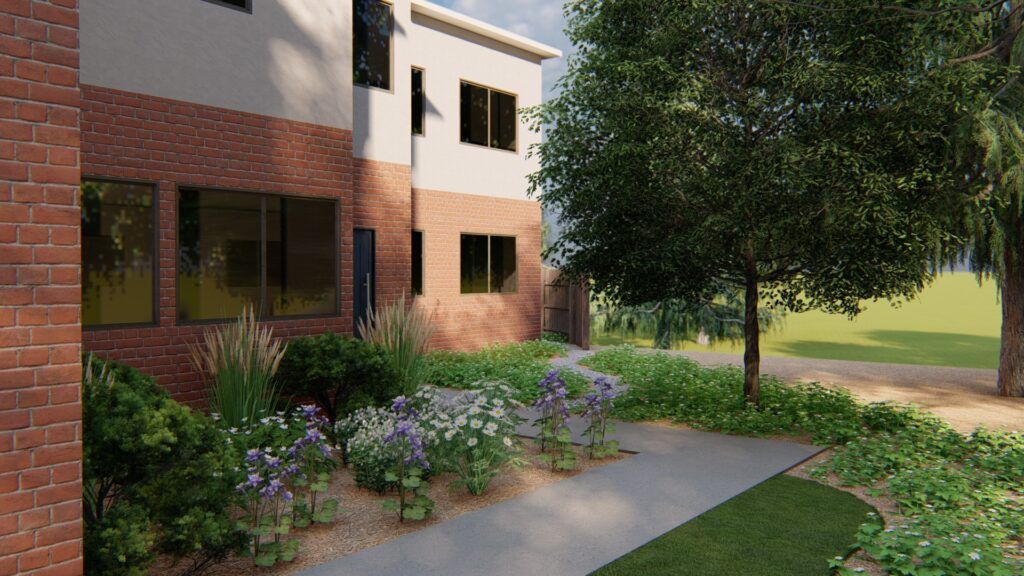
What are the principles of landscape design?
You can't become a master landscape designer overnight, but you can study the cliffs notes of our design fundamentals to become a stronger designer in your own right! There are several important principles we always have to consider when mapping out any landscaping plan:
- Unity: Every part of your design should work together both functionally and aesthetically.
- Line: Use the lines in your landscape (the paths, the edges of flower beds, the fences, etc.) like the strokes of an artist's paintbrush to intentionally and intelligently shape the space.
- Form: Understand the shapes in your landscape features (tall, round, pyramidal, etc.) and repeat those forms across features from trees to shrubs to furniture in order to build unity.
- Texture: From smooth stone to delicate leaves to spiky succulents, every feature has textures that can be complementary or contrasting.
- Color: Color can produce a focal point, a unified look, and even a mood for a space. A strong color palette builds cohesion in a landscape.
- Scale: Use the scale of objects to draw the eye where you want it. Keep objects in proportion for cohesion or play with varied scale to create emphasis.
- Balance: You can build balance through exact symmetry for formal structure or by distributing the visual weight of objects across the space for a creative spin.
- Simplicity and Variety: Simplicity relies on repetition, while variety relies on diversity and contrast. Balance both to achieve visual interest.
- Emphasis: Building a strong focal point requires highlighting one feature and allowing surrounding features to take a supporting role.
- Sequence: Create flow and movement by gradating or contrasting colors, textures, and sizes of landscaping features.
This can feel like an intimidating amount of information to consider, but you can take it step by step. When you consider a new option for your landscaping, ask yourself: "Would my space be balanced?" or "Does this fit into my color palette?" Use these principles to influence your design process and to edit and revise your work.
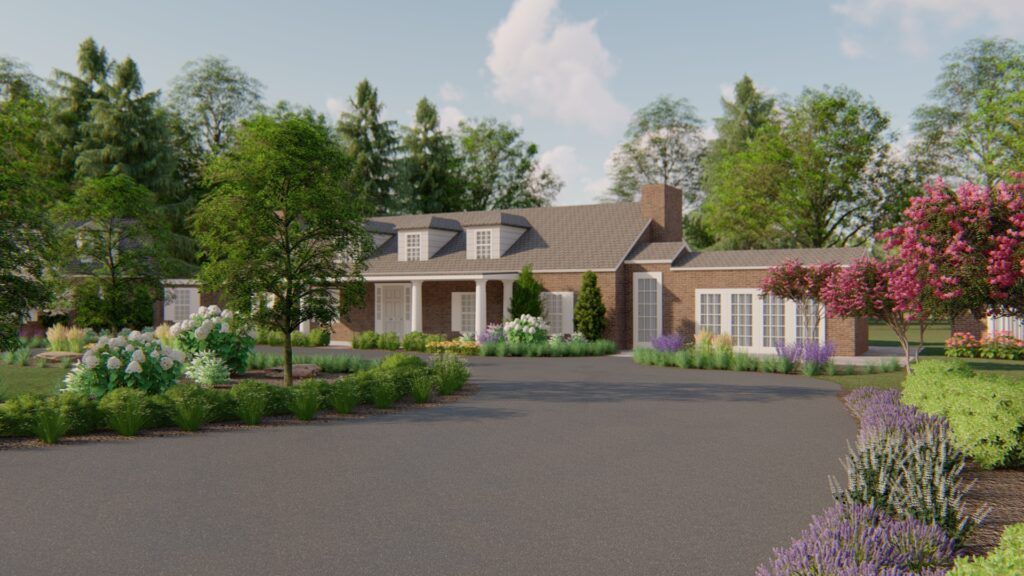
Our Favorite Front Yard Landscaping Ideas
Now that you understand the fundamentals of front yard landscape design, it's time to see how to bring those principles to life! The sky's the limit when it comes to landscape and garden ideas, but we've pulled together a shortlist of some of our favorite approachable projects that will make a big impact on your front yard design.
Make Sustainable Swaps
Here at Tilly, we try to infuse sustainable techniques throughout all our designs (and our business practices)! The good news is that sustainability doesn't have to be intimidating. A little bit goes a long way, and you can start with easy swaps to create a more eco-friendly front yard.
When selecting plants, choose native plants which will supply food and shelter for birds and other wildlife while requiring less water and fertilizer than non-native varieties. In dry and drought-prone areas, drought-tolerant plants planted in your front garden will help reduce water waste (and your water bill).
When it comes to your lawn, conventional turf grass may have the look you want, but it provides very little ecological value. Consider reducing your lawn grass in favor of more landscaping features and swap your turf grass with more sustainable alternatives. Your improved space will be better for your local ecosystem, and as an added benefit you'll have to spend much less time with your lawnmower. You can also consider a low maintenance and durable option, like artificial grass.
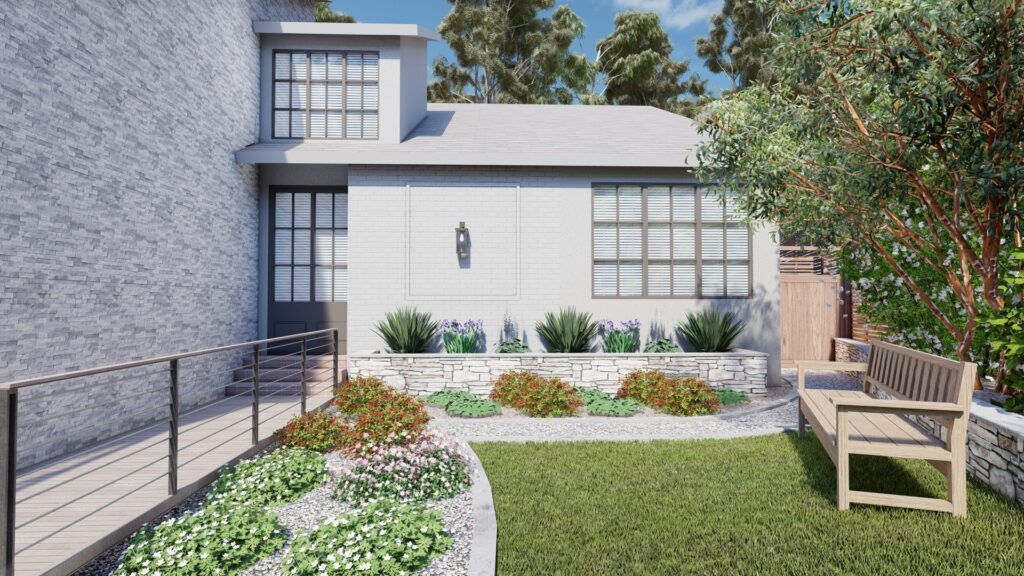
Create a Certified Wildlife Habitat®
If you want to take you eco-friendly habits to the next level, get your yard approved by the National Wildlife Federation™ as a Certified Wildlife Habitat®! Go through their checklist in your front yard and back yard to see what requirements you meet already and which will require some updates.
Most of the requirements aren't intimidating! Choose plants that benefit the ecosystem and add a beautiful moving water feature that doubles as a place for wildlife to drink, and you're already halfway there. You can have a gorgeous and eco-friendly front yard (we know because we've designed a few) and get a nice little "Certified Wildlife Habitat®" sign for your front yard that will be a great conversation starter with the neighbors.
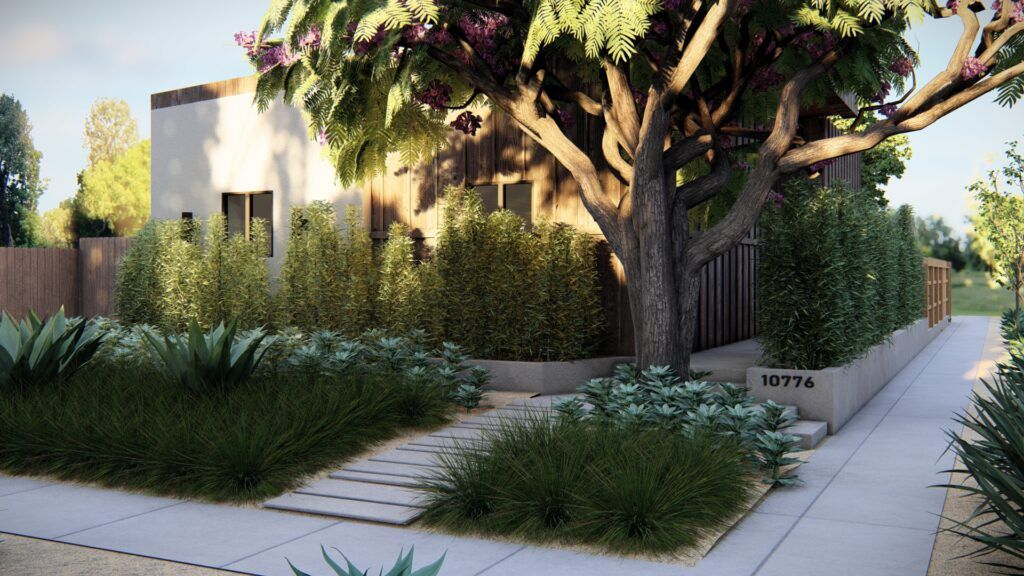
Create a Garden that Reflects Your Style
Just like your interior design, your front yard should show your personality and aesthetic. Plant a colorful border of annual flowers by your gate to show your exuberant sense of style, or frame your front door with boxwood shrubs for luxurious and stately appeal. Match your front garden design to your style and you can't go wrong.
Update Your Walkway
Bring new life to a tired walkway (or finally create the path you've always wanted)! Replace sparse gravel or overgrown pavers with an elegant stone walkway, rustic stepping stones, or sharp brickwork to create a welcoming entrance to your home.
Add a New Garden Bed
Keeping your plants contained in a garden bed makes upkeep easier and preserves green space while cutting down on your lawn! Garden beds are versatile, and you can choose the right plants for you. Make a flower bed filled with your favorite perennial flowers or create a lush vegetable bed so your garden makes a fantastic salad for dinner.
Upgrade Your Front Foundation Planting
In landscaping design, front yard curb appeal is all about making your house look its best—and you can do that with strong foundation planting. The planting areas at the base of your home's walls offer the perfect way to frame your house and cohesively connect your home and garden. Make sure to layer your plants from the shortest in the front to the tallest in the back to make your plantings look full and to draw the eye to the house itself.
Add Planters to Your Entry Way
Adding potted plants to your front yard is an easy way to add color and life to your space without ever having to break ground! Mount hanging baskets with flowering plants on your front porch for a beautiful seating area or keep things simple with low-maintenance evergreen shrubs planted in pots if you're not confident with your green thumb.
Change Your Entry Seasonally
Keep your front door looking beautiful in every season by updating your entryway decor. Swap the annuals planted in your pots for continual blooms and keep up the color and texture through the winter by adding dried ornamental grasses or evergreen boughs to your planters for a little life even in the snow. Small updates can give your house year round interest!
Update Your Landscape Lighting
Your front yard doesn't have to stop looking beautiful when the sun sets. Smart use of light can add to your curb appeal long after dark. Install low lighting along paths and your driveway to light your way. Use uplighting to highlights plants, sculptures, and your house itself. Hang lights from the trees for a dreamy diffused glow across your garden.
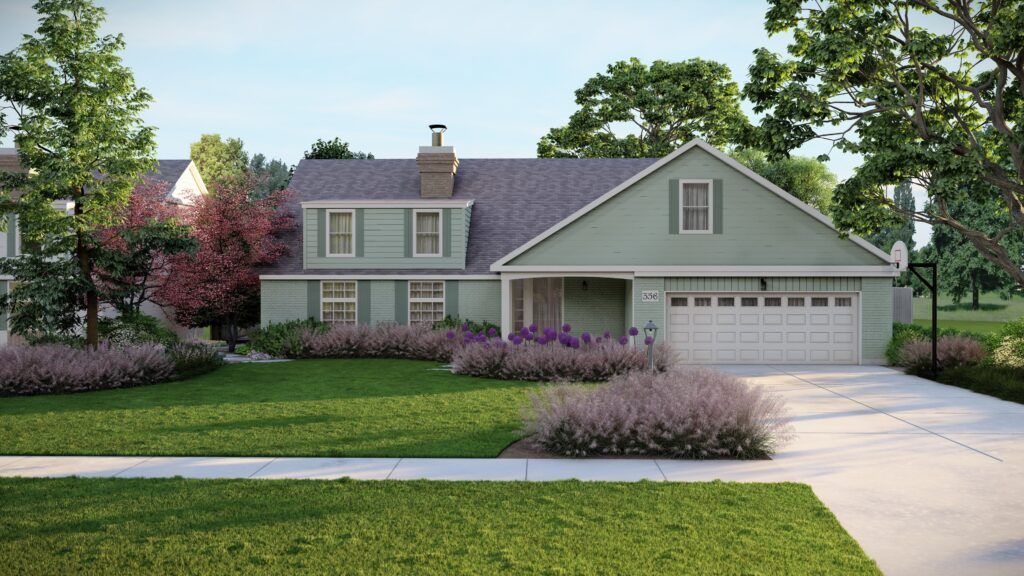
A front yard is much more than just a lawn! It's a place to get your zen on by a water feature or gather all your friends around the fire pit. It's a space to show off your landscape and garden design ideas. Your front yard is what you make it, and with all this information under your belt, you're on your way to making something pretty great.
Like this article? Check out some of our backyard content too!
Like how to update your backyard deck on a budget or DIY backyard ideas to elevate your space!
About Tilly
Tilly’s easy online landscape design process has been embraced by homeowners across the country and in Canada. Tilly breaks packages into the Front Yard, Backyard or your Full Yard. We match you with a professional landscape designer who is familiar with your region to create the perfect custom plan for your outdoor space.
To start our process you’ll fill out a questionnaire about your property that helps our design team understand your goals, needs and existing landscape. You can add 3d renders, lighting plans or side yards to your design package. You’ll then meet with your designer on a video call, show them your space and discuss your priorities. Tilly also offers individual DIY projects, including a DIY Garden Bed if you aren’t ready to tackle your entire yard.
Whether you are just looking to add some curb appeal or transform your entire backyard - we have a team for you!
Read more about: Landscape Design Tips, Gardening Tips, Sustainable Design